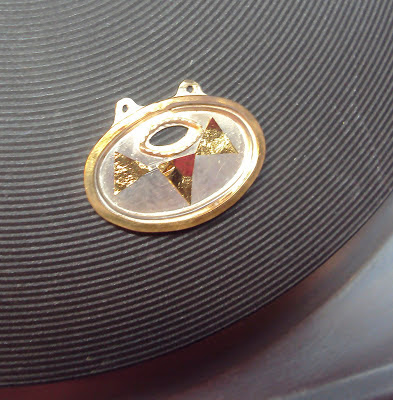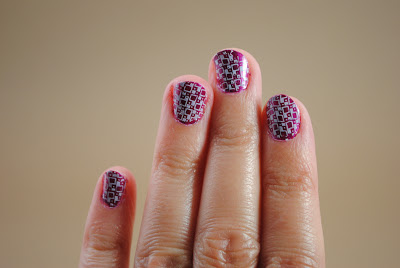Today I was working on the Korean process of Keum Boo. A customer asked me to re-create a pair of earrings I had made some months ago, so yesterday I constructed the earrings out of sterling and brass wire. Today I needed to apply the gold foil and finish them up. Let me walk you through what's involved with applying gold foil... it is a technique of fusing pure gold to the surface of another metal, in this case sterling.
Celie Fago is a metalsmith that uses a lot of keum boo- she wrote a great instruction book on it if you want to learn more!
Here you can see a picture of the original earrings, plus the components of the new pair- silver ovals rimmed with brass wire, opal cabochons, and what will become the earwires.
In order to fuse the gold to the silver, the silver must not oxidize/darken as I heat it to fusing temperature, or the gold will not adhere. I could've used fine silver to achieve this, but it's easy to do with sterling- if you raise a layer of fine silver to the surface. You must heat the piece to annealing temperature and quench in pickle 4-6 times. Don't use flux, and use a Sharpie to indicate when annealing temperature has been reached- it will burn off.
Here you can see the pieces right after being annealed. The surface of the silver is frosty, but not dark. That means these pieces are ready for keum boo, having been annealed and pickled about 5 times.
After pickling the pieces, I use a pre-polish disk to clean them up, as well as compress the fine silver layer. Here the piece on the top has been pre-polished, the bottom piece has not.
You need a hot plate capable of heating to at least the 800-900 degrees F. necessary to create fusing between metals. I also use a stainless steel burnisher. You can also use an agate burnisher because some people say the gold foil can stick to the s.s. (after all, it's a metal too), but I've never had that happen.
And you need some heat-proof gloves. From all the burn marks you can see these are really helpful!
Last but not least, you need gold foil! The gold sheets used for gilding are not thick enough- this is a specialty keum boo gold foil sold by Rio Grande. It's better to cut it between the 2 pieces of tissue paper, but it's thick enough to cut plain, too. I like to use different shaped punches, too, for consistent shapes I'd never be able to cut out myself!
Here I've cut out all the triangles needed- I like to put at least 2 layers of foil on the silver for a nice bright look. One layer tends to be a little dim.
I carefully place the triangles exactly where I want them, and then place the whole thing on the hot burner. I leave it there for about a minute without touching it, so it can get up to fusing temperature.
Next I touch the foil to the silver, and if it sticks, it's ready to be rubbed/burnished down. I will often use my tweezers to hold down the piece so it doesn't move as I'm rubbing. I use the back of the burnisher because I don't want to risk scratching off the gold foil- it's very fragile. (sorry for the bad pic- didn't want to melt my camera!)
Here are the pieces after burnishing/fusing and pickling. You can see the marks left from the rubbing process.
Here are the pieces after the pre-polish wheel. It takes out a lot of the scratch/rub marks. The contrast between the gold/silver is not real strong here, so I opt to oxidize/darken the pieces in order to create contrast. Don't use SilverBlack or the like- it will darken everything!
Instead use liver of sulfur- it doesn't darken the gold- only the silver! I heat up some water and use the gel type (it lasts forever!) to mix in a bit of the stinky stuff. A quick dip is all you need.
See the nice contrast? This top piece is fresh out of the liver of sulfur.
And here are the finished earrings! They have a great antique look and the brass outer trim picks up the gold keum boo color nicely. Now to email my customer and tell her they're ready!
 |
| Other examples of pieces I've made with keum boo. |










































